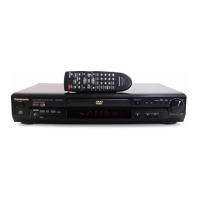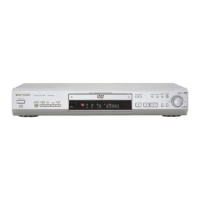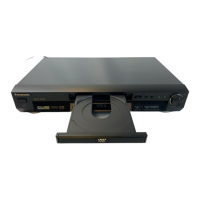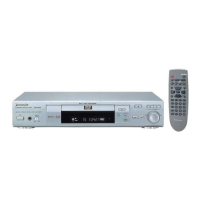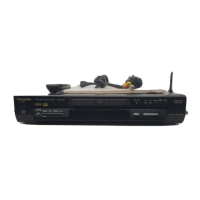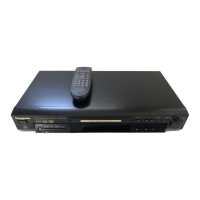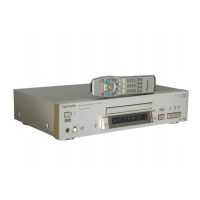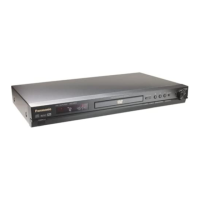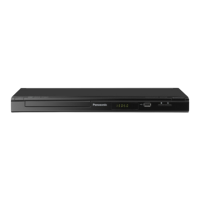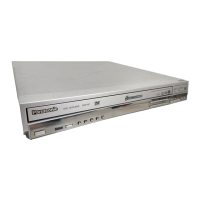*Ensure that the equipment is connected properly.
*Make sure the television is on.
*Ensure the television’s video input setting (e.g., VfDEQ 1) is correct
TV aqxete 80 ?& yEmr ~~~~j~~~* VW
Unit displavs
I
*You inserted a disc the unrt cannot play: insert one it can.
ra
“HOO”
00 stands for a number.
*Trouble is likely to have occurred. The number following “H” depends on the status of the unit.
Reset procedure:
Press [POWER &] to switch the unrt to the standby mode and then back to ON. Alternatrvely, press
[POWER &] to switch the unit to the standby mode, disconnect the AC power supply cord, and
then reconnect it.
1
note the service number and contact a qualified service person.
Television displays
*Go to Display in the SETUP menus, and select “On” for “On-Screen Messages”.
&
&s the r
E b ~1~~~
t&m r&m.
..-
16
%4
The disc’s menu is displayed in *Go to Disc in the SETUP menus, and select the preferred language for “Menus”. 16
a different language.
I I
Bitstream
Frame still and field still
This is the digital form of multiple channel audio data (e.g., 5.1 channel)
before it is decoded into its various channels.
Decoder
A decoder restores the coded audio signals on DVDs to normal. This is
called decoding.
Dolby Digital
This is a method of coding digital signals developed by Dolby Laborato-
ries. Apart from stereo (2-channel) audio, these signals can also be 5.1.
channel audio. A large amount of audio information can be recorded on
one disc using this method.
Dolby Pro Logic
A surround system where a 4-channel audio track is recorded as 2 chan-
nels and then is restored to 4 channels for play. The surround channel is
monaural and can reproduce up to 7 kHz.
DTS (Digital Theater Systems)
This surround system is used in many movie theaters around the world.
There is good separation between the channels, so realistic sound effects
are possible.
Dynamic range
Dynamic range. is the difference between the lowest level of sound that
can be heard above the noise of the equipment and the highest level of
sound before distortion occurs.
Frames are the still pictures that go together to make a moving prcture.
There are about 30 frames shown each second.
One frame is made up of two fields. A regular television shows these fields
one after the other to create frames.
A still is shown when you pause a moving picture. A frame still is made up
of two alternating fields, so the picture may appear blurred, but overall
quality is high.
A field still is not blurred, but it has only half the information of a frame still
so picture quality is lower.
IlPlB
MPEG 2, the video compressron standard .adopted for use with DVD-
Video, codes frames using these 3 picture types.
I: lntra coded picture (l-picture)
This is the standard picture and IS a complete picture In itself. This
means it has the best picture quality and is the best to use when
adjusting the picture.
P: Predictive coded picture (P-picture)
This picture is calculated based on past I or P-pictures.
B: Bidirectionally-predictive coded picture (B-picture)
This picture is calculated by comparing past and future I and P-pic-
tures so it has the lowest volume of information.
Linear PCM (pulse code modulation)
These are uncompressed digital signals, similar to those found on CDs.
Playback control (PBC)
If a Video CD has playback control, you can select scenes and information
with menus (called menu play in these instructrons).
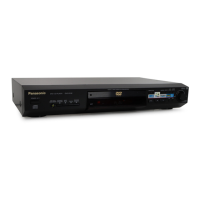
